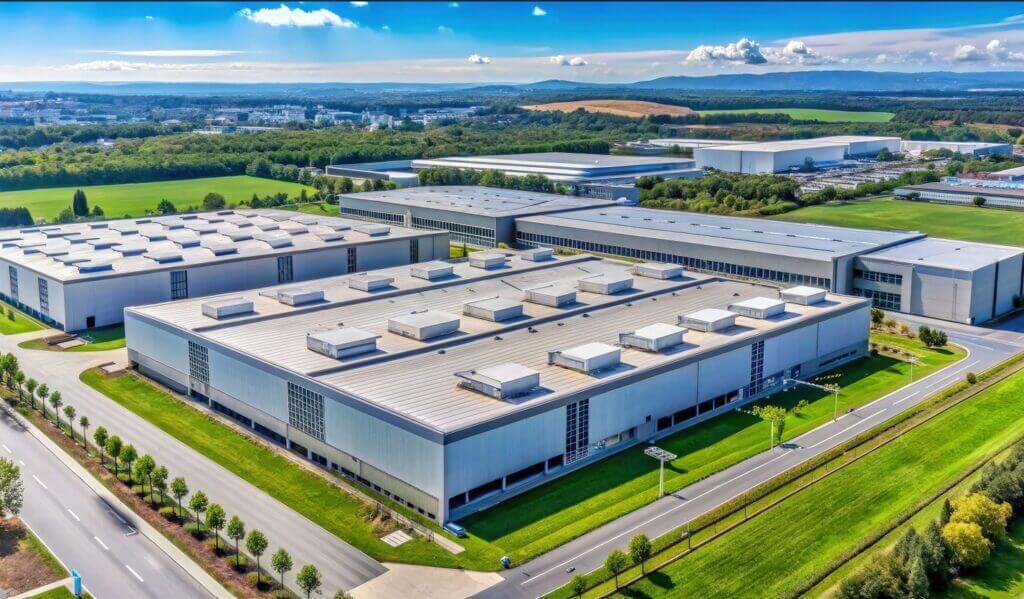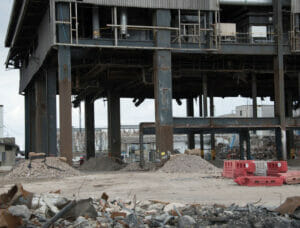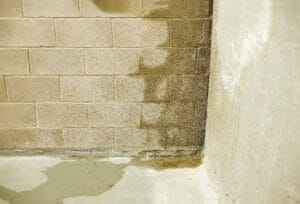There are over 450 data centres in the UK, with a significant number located near major urban environments such as London, Manchester, and Birmingham, due to the need for robust infrastructure and connectivity. The volume of data transferred daily is immense, so closer proximity of data centres ensures that information can reach its destination with minimal latency. A data centre located thousands of miles away would not offer this advantage, which is why many are strategically located in urban environments. Colocation data centres are units where hardware such as servers are rented out and are typically sized between 90-5,000 m². They are often found near financial hubs like London, where access to fast data routes is essential. Depending on the infrastructure requirements, the estimated cost for a colocation facility can range between £20 million to £50 million.
Noise Vibration Produced by Data Centres
The design of data centres must also consider the environmental effects produced on other human activities in surrounding areas. For instance, large amounts of heating, ventilation, cooling (HVAC) and power are needed to keep the extensive electronic systems operating together smoothly. The noise and vibration produced by the supporting mechanical and electrical systems should be carefully considered in the design and maintenance of the facility. Failure to do so could lead to non-compliance of noise and vibration requirements, or complaints from neighbours and building occupants.
As an example, a recent project was planned with its own combined heat and power (CHP) generation system to support high-density data centre operations. By generating electricity onsite, the facility not only reduced dependence on commercial grid power, but also gained a financial advantage in energy costs, estimated to save up to £2 million annually. This approach also provided greater resilience against grid instability, which is particularly valuable for data-intensive operations.
In this case, the power plant used two natural gas turbine generators located on the upper floor of a multi-storey building (approximately 6 to 10 metres above ground level), along with three large diesel backup generators in the basement (approximately 3 metres below ground level). The design included rooftop radiators and air-cooling towers, as well as air inlet and exhaust louvers integrated into the building’s façade. Due to the proximity of residential and mixed-use properties, the project was required to comply with the city’s noise regulations.

The project team developed an acoustic model to evaluate the noise emissions from various sources. Analysis of air inlet and exhaust systems showed the need for considerable mitigation measures, leading to the installation of multiple silencers in the ventilation system. In addition to noise, vibration was also a key consideration given the sensitivity of nearby buildings and the data centre itself.
A comprehensive vibration isolation strategy was implemented, which included:
- Resilient mounts and flexible fasteners for the generators
- Cooling towers
- Fan motors
- Chilled water pipes
Vibration and Noise Intrusion on Data Centres
Data centres house a vast array of sensitive equipment, including servers, storage systems, and networking devices. One often overlooked threat to the performance and reliability of these systems is vibration.
Uncontrollable external sources like traffic or nearby construction can introduce vibrations that impact equipment performance, particularly in cloud storage environments where noise and vibration sensitivity is high. Local traffic passing over speed bumps is a major area of concern.
Given the high density of data centres and the critical nature of services provided, mitigation of vibration and noise is of utmost importance. This often requires sophisticated vibration isolation techniques, to protect sensitive equipment and maintain the reliability of operations.
This can include the use of:
- Resilient mounts
- Dampers
- Vibration-absorbing flooring
Vibration and Noise Challenges Within Data Centres
Key vibration concerns include:
- Sensitive Equipment
Cloud storage systems, with their high data throughput and precision components, are especially sensitive to vibrations. Even minor, low-frequency vibrations can cause data errors, slowdowns, and in extreme cases, hardware failure.
- High-Density Server Racks
The concentration of equipment in high-density server racks makes them vulnerable to both airborne and structure-borne vibrations. These vibrations can lead to cumulative effects that degrade performance over time.
- Building Services
Cooling systems, fans, and HVAC units, which are essential for maintaining optimal operating temperatures, can themselves generate vibrations that propagate through the data centre’s infrastructure, affecting the performance of critical systems.
- Footfall
Vibration sources can originate from activities within the building, from employees or other users within circulation spaces such as corridors and staircases.
As an example of external vibration control, data centres can incorporate foam-filled trenches along the external façade, to minimise impact from external sources. These trenches act as vibration dampeners, absorbing and dispersing vibrations before they reach the building structure. Foam materials have high damping properties, especially in low-frequency ranges typical of urban traffic. By digging a trench around the facility’s perimeter and filling it with dense, vibration-absorbing foam, vibration transmission can be significantly reduced.
For a simplified calculation, consider a 1.0-metre-deep, 0.5-metre-wide trench filled with foam, which has a damping coefficient of approximately 0.15 for typical low-frequency vibrations such as traffic. The foam-filled trench reduces the amplitude of incoming vibrations by about 85% over 1.0 metre, significantly lowering vibrations transmitted to the building’s foundation.

In addition to vibration, noise is a significant challenge within data centres. Noise generated by mechanical equipment, including cooling systems, fans, backup generators, and HVAC units, can have several adverse effects including:
- Equipment Performance
High noise levels can indirectly impact equipment performance by creating airborne vibrations. These vibrations can propagate through the air and affect sensitive components, especially in densely packed server racks.
- Occupational Health
Prolonged exposure to high noise levels can affect the health and well-being of data centre personnel. Noise levels from cooling systems, particularly in high-density environments, can exceed safe thresholds, necessitating the use of hearing protection and noise-reducing strategies.
Addressing noise challenges involves careful design and planning. Acoustic modelling is often employed to predict noise propagation and ensure compliance with local standards. Solutions like barriers, acoustic housings for machinery, and silencers for air inlets and exhausts are commonly used to minimise the noise impact both internally and externally.
Protect Your Data Centre with Hawkins Acoustics
In a world where data drives every aspect of business, protecting the integrity and performance of cloud storage systems is paramount. The Acoustics team at Hawkins can provide the expertise, technology, and solutions to safeguard data centres from the risks posed by noise and vibration. We can assist with the correct selection of vibration control and noise solutions when planning new data centres, or optimising existing facilities to ensure uninterrupted, high-performance operations.

About the Author
Andrew began his studies at the University of Bath where he earned degrees in Mathematics, later obtaining a PhD, specialising in computational mechanics applied to acoustic scattering from roadside noise barriers. He is experienced in computational dynamics, environmental noise and vibration control. His early work on the Boundary Element Method (BEM) for acoustic and elastic wave propagation set the stage for contributions in the field and his research has produced over 60 high-impact publications and ongoing international partnerships. Andrew has provided his expertise to solve complex challenges in railway vibration, structural and building vibration prediction and environmental noise control. He has been instructed as a technical expert for projects ranging from heavy plant operations to large-scale HVDC stations and wind farms. Andrew joined Hawkins in September 2024 as a Principal Consultant based in our Cambridge office.
If you have a vibration or noise related query and need the help of an expert, contact us for a free consultation.







